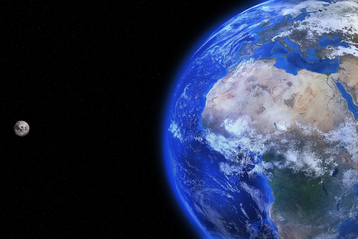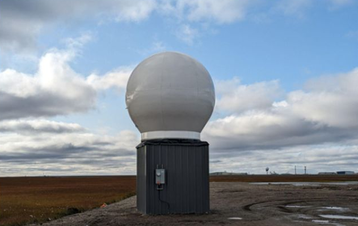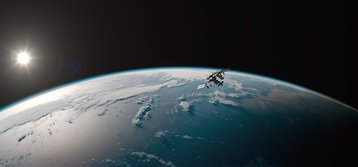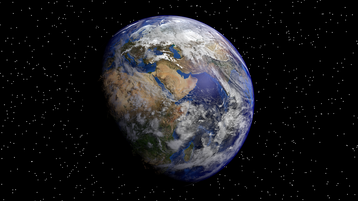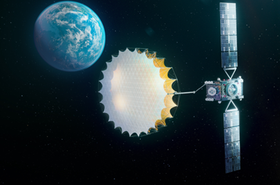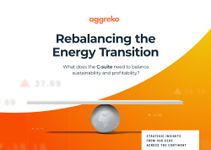As with most high-tech industries, the satellite market has grappled with its share of operational hurdles as technological ambitions collided with reality.
Debris aggregation, cosmic radiation, geomagnetic storms, cyber, and ASAT vulnerabilities all keep sober minds up at night, and atmospheric pollution from destructive de-orbit is just as serious.
As the rate of satellite insertion accelerates and lower, shorter-lived orbits become common, questions about what to do with derelict models in orbit have only become more pressing.
Though the space debris issue has been taken more seriously in recent years, scientists have discovered that destructive re-orbit, the standard method of debris disposal for modern Low Earth Orbit (LEO) satellites, is causing significant harm to our planet’s atmosphere.
Speaking recently with DCD, David Balson, chief strategy officer at satellite tracking firm Lumi Space, was keen to emphasize cost-effective solutions to the debris issue – chiefly laser-based methods.
“There are millions of pieces of small debris that will never be cost-effective to remove robotically. The only credible way forward here is ground-based laser momentum transfer (LMT) to sweep across LEO space catching both trackable and untrackable debris,” he explains. “With high-intensity laser power which is both photonic power and laser ablation to excite particles off orbital objects to create additional delta-V, slowing them down so they fall from orbit.”
When pressed about the expanding concern over the pollution of destructive atmospheric re-entry, he cited the common refrain about the space industry’s tiny relative footprint when compared to super-emission heavyweights like commercial aviation or global shipping.
It’s an argument Matthieu Derrey, space products sustainability manager at Airbus has no sympathy for. Speaking at Paris Space Week last year, Derry stated that the full environmental impact of the space industry is yet to be understood. A single geosynchronous satellite can produce 100,000s of tons of carbon over its lifetime, Derrey said.
“We at Airbus want to identify sustainability problems as early as possible and be part of the solution to do better, so we don’t get taken out of the competition in green tech markets,” Derrey told delegates.
Understanding the problem of burn-up
Various metals, chemicals, and materials that compose satellites can have an adverse effect on the upper atmosphere, which scientists are finding is gradually filling with more man-made particulates.
“Aluminium oxide particles [disintegrated in abundance during satellite burn up] can provide surfaces for heterogeneous chemical reactions to take place, which can activate chlorine compounds, releasing active chlorine atoms that catalyze the breakdown of ozone,” Professor Chiara Manfletti, CEO of satellite-tracking firm Neuraspace, and former head of the Portuguese Space Agency, tells DCD. “Let us be clear that the largest contributor of chlorine in the atmosphere is human-made sources! Stratospheric chlorine levels have declined by ~15 percent since their peak in the late 1990s, but full recovery of the ozone layer is not expected until mid-to-late 21st century, dependent on continued compliance.”
Lumi Space’s Balson correctly points out that successful satellite de-orbit, controlled or otherwise, is far from commonplace, occurring just a few dozen times per year.
“This needs more research,” he states. “It’s an open question what damage to the upper atmosphere we’ll see in the event that thousands of satellites [such as those comprising the leviathan Starlink and Kuiper constellations] are placed in destructive re-entry.”
Academics are unanimous that further research is absolutely necessary, though some believe we know more than enough to start being proactive today.
“It is true that we do not yet fully understand the chemical byproducts produced during atmospheric re-entry or their environmental impacts,” Dr. Minkwan Kim, associate professor in astronautics at the University of Southampton, tells DCD. “However, recent scientific studies indicate that approximately 10 percent of stratospheric aerosol particles already contain aluminum and other metals originating from the ablation of satellites and rocket stages during re-entry. With the expansion of mega-constellations and increasing launch traffic, the presence of these metals in the stratosphere is expected to rise.”
This threat is compounded by the permanence of the pollution. Particulate matter disintegrated into the upper atmosphere is not falling naturally, instead lingering where it poses a pollution risk to the ozone.
“There is currently no technological way to remediate metal oxide contamination in the upper atmosphere,” Dr. Kim warns.
A call for better tracking?
Before the conversation about atmospheric pollution, a need to comprehensively track the orbital environment was well-understood. In an era of multiplying debris, complex OTV maneuvers, and spy satellites, that demand has only compounded.
“Operators are drowning in collision warnings – there are hundreds every day,” Lumi Space’s Balson says. “Part of the debris problem is a tracking problem. Resolving that will mean we can use orbits with greater assurances of safety, and fill orbits more comprehensively.”
Prof. Manfletti, who heads a team of AI experts modeling the orbital environment’s many risks at Neuraspace, recognizes the utility of reliable models of what is going on in space.
“Having a comprehensive, precise, high-fidelity data set regarding the orbital environment is essential,” she says. “It is essential to avoid collisions from launch to end-of-life, it is essential for debris removal and for fleet management. Space situational awareness, space traffic management, and more broadly space domain awareness are capabilities without which we will not have a space economy.”
Short-term solutions
As the argument about pollution risk rages on, scientific consensus around common sense and economically reasonable interventions is beginning to form.
“Non-aluminium satellites are possible,” Prof. Manfletti says. “We can mandate propulsion for all spacecraft [allowing them to live longer through repositioning]. We could introduce pre-emptive infrastructure measures, such as space tug OTVs, or introduce modular satellite architectures with replaceable parts and minimum waste.”
Dr. Kim agreed with the necessity to use less aluminium, but insisted that eliminating the metal entirely wasn’t possible.
In an attempt to test new materials, the Japanese University of Kyoto demonstrated Lignosat in 2024, the world’s first satellite made out of magnolia wood.
“We are very concerned with the fact that all satellites which re-enter the Earth’s atmosphere burn and create tiny alumina particles which will float in the upper atmosphere for many years,” Takao Doi, a Japanese astronaut and professor at Kyoto University, as well as the first person to throw a boomerang in space, said of the project in 2020.
A spokesperson from the university, speaking last year, cited predictions that 50 percent of aerosol particles in the stratosphere could come from rocket and satellite re-entry.
“Transitioning to wooden satellites may lower the rate of stratospheric aerosol pollution,” they proposed.
Dr. Kim points out that while a step in the right direction, Lignosat still relied on Aluminium for its key structural frames.
The lunar necropolis
Despite the apparent dangers of destructive re-entry, debris remains its own existential problem. Whether we perform missions to control its burnup or not, everything in orbit is slowly but surely falling back to Earth.
Speaking last year, Adam Mitchell, a materials engineer at the European Space Agency, said that eventually we should move away from deorbiting as much as possible. “The in-space circular economy is so important, and this should be the long-term strategy: refueling, repairing, recycling, in-space manufacturing, and relaunch from space,” he said.
While essential in the long term, a circular economy in space will require countless technological breakthroughs and demonstrations, including sophisticated space stations, in-space automation, and smart systems.
In the meantime, debris mitigation through transfer into graveyard orbits, above geostationary space has been tabled. While Dr. Kim agreed strongly with ending destructive de-orbit, he warned of the costs of using graveyard space in the case of LEO satellites, which are the bulk of the problem.
“Storing satellites in graveyard orbits is costly and impractical for nano- and small satellites, as it requires a significant amount of propellant,” he says.
During her time as a senior advisor to the European Space Agency, Prof. Manfletti brought the solution to key decision-makers.
“Diverting non-functional or dying hardware towards the moon for use as raw materials at some point in the future [could be practical],” she says, but echoed concerns about operational feasibility. “The hard part of it today is the economics of it, but that will change. … All these mechanisms will likely be seen by some as introducing additional costs and will be seen by others as enablers of new markets.”
As satellite operators and LEO barons underplay the problem, the development of a Lunar necropolis of satellites as a cache of resources for the space economy of the future may be too fancifully technocratic for our age.
Is orbital sustainability an environmental issue?
In the wake of ideological obstacles interrupting the momentum of sustainable and green industry, ESG financing and corporate culture has stuck fast, leading some in the space industry to try to detach orbital sustainability from its remit.
“There are no coral reefs to preserve in space,” Lumi’s Balson says. “The politics aren’t the same. The maxim for space is about unlocking downstream applications in debris, which we can’t do in environments contested by debris. Perhaps the industry should avoid using language designed for Earth’s environment. Our orbits are a critical part of the planet with their own concerns better suited to philosophers and politicians rather than industry.”
At the Space Security Conference at Chatham House, Kai-Uwe Schrogl, special advisor for political affairs at the European Space Agency and an industry veteran, mused on the progression of the argument.
“In the early 1990s, diplomats were eager not to categorize the debris as an environmental problem, rather a technological one,” he told attendees. “They didn’t want to bring it into a political mechanism that would require them to take action. That eventually changed to the extent that we are now looking at bringing debris abuses into the category of ecocide to elevate the nature of the crime.”
Like many at the conference, Schrogl did not have as much to say about that trend going in reverse due to the current political climate.
“The space industry tends to be highly conservative, primarily due to financial costs, particularly for large companies like Boeing and Airbus,” Dr. Kim determines. “However, abandoning green initiatives is not the solution.”
Prof. Manfletti agreed, pointing out that stern economics without environmental viability had no future, and vice versa.
Judging by the extent of debate and deliberation in the industry in years past, a long and cyclical conversation lies ahead for the question of satellite re-entry pollution with persistent knowledge barriers reinforced by resistant political headwinds to contend with.
Dr. Kim had no illusions about the existentiality of the problem.
“We do not have the luxury of time for this issue,” he concludes. “Immediate action is needed before it is too late. The first step is to develop robust scientific models to track and assess the environmental impact of ablating satellites, laying the groundwork for effective mitigation strategies. Establishing a global standard or protocol to assess metal oxide emissions from ablating satellites is essential. Additionally, incentives could be introduced for companies that develop low-emission satellite disposal methods, encouraging the industry to adopt more sustainable practices.”
Read the orginal article: https://www.datacenterdynamics.com/en/analysis/a-new-threat-for-satellites-can-orbital-re-entry-pollution-threaten-our-atmosphere/
